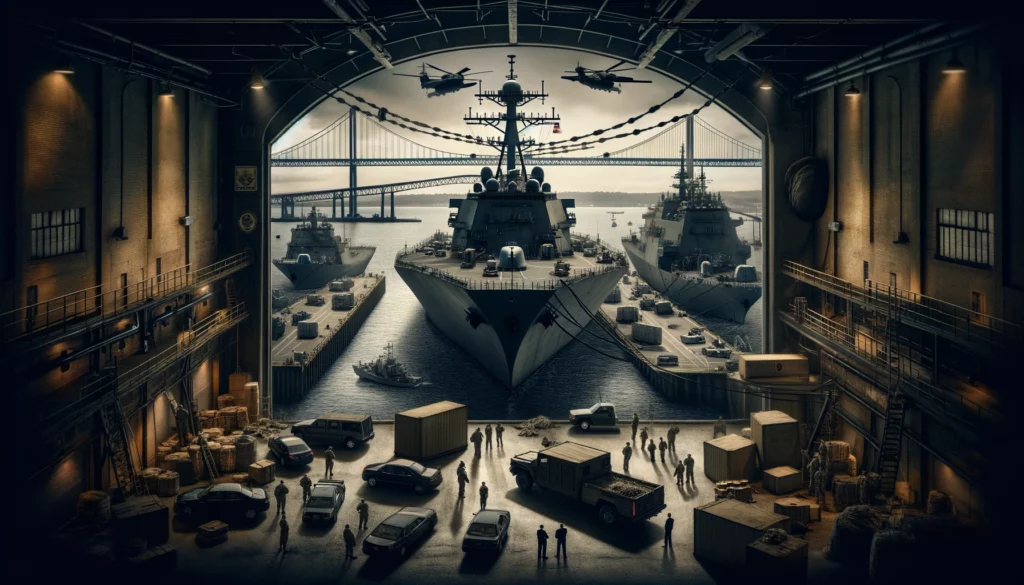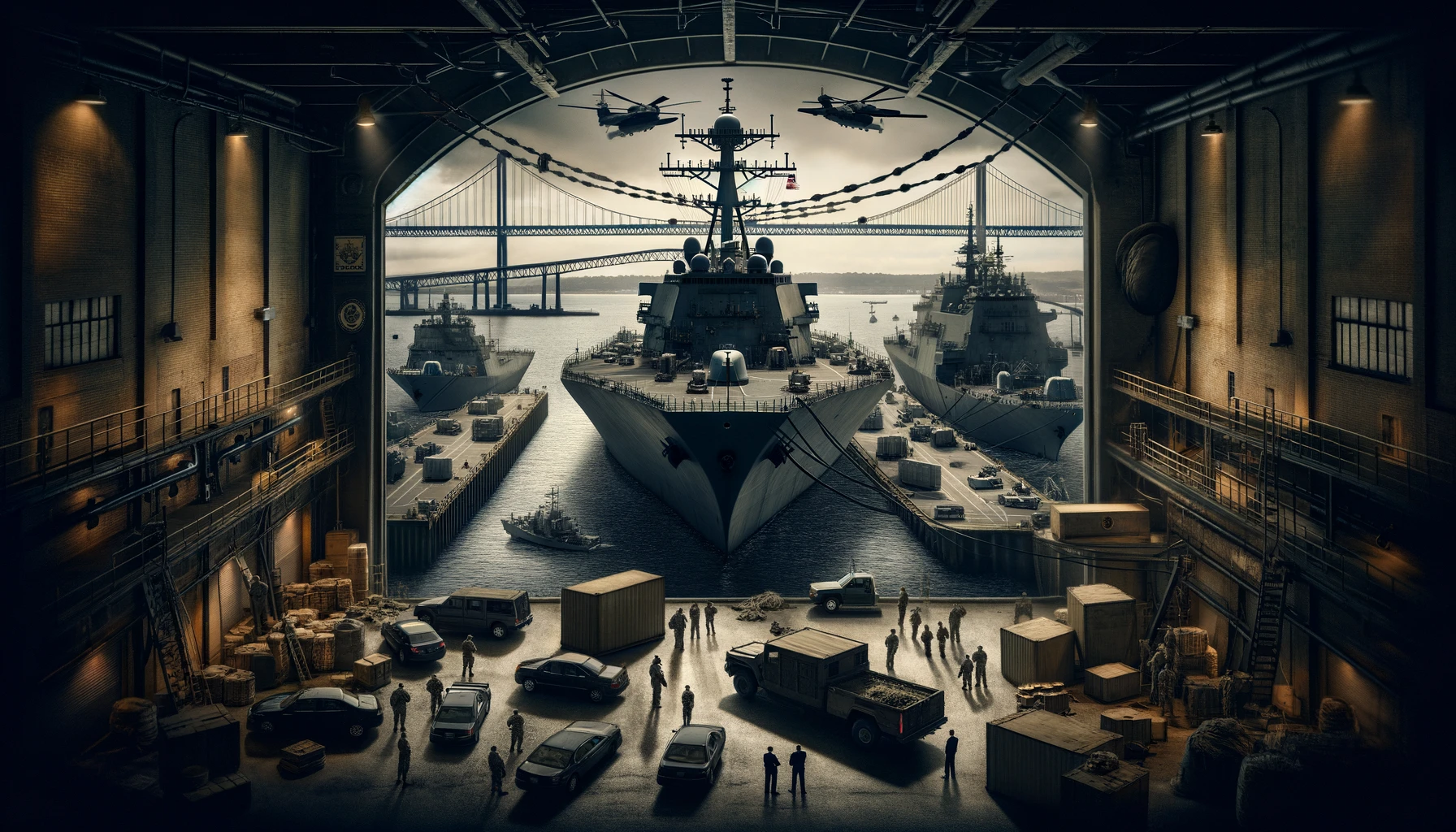“The Baltimore Francis Scott Key Bridge take-down was a trillion-dollar costly event, ongoing, and yet all culpable persons remain unnamed, kept totally anonymous, with some reportedly having been slyly ‘escaped’ from the country! There is, in fact, zero publicly-verifiable evidence that any genuine Captain, Pilots or Crew ever existed: Was DALI a remote-controlled ghost-ship on kamikazee mission from its outset? No waves or creaking metal nor splash-down sounds at all were recorded nor (initially) noted by any (reportedly) nearby persons; cameras recorded zero shaking, seismometers measured zero vibration. Anomalies and oddities galore overwhelm the aftermath, beguile reason, confound explanation. No interviews exist with supposed survivors; “family and friends” etc interviews reveal ‘dupers-delight’ micro-facial-expressions with other hallmarks suggestive of fraud. No verifications of any supposed deaths have yet been publicized. Rampant is the extremely suspicious damage with blatantly visible, verifiable anomalies (including massive, five-storys tall fireballs in both original night-time videos) totally inexplicable (and wholly ignored) by official theory or story. Grand payola galore is already underway with loads more coming. This event appears to involve another shabby yet audacious crime, militarized from gov to salvage to rebuild. There was no rescue skiff on scene as required by OSHA. No horn blasts from ship warned of imminent collision. The DALI ship departed despite (supposed) dire electrical problems, illegal at any time and even more highly unusual in the cold, dark night-time (part #94, first ‘after-sundown departure’ in two years). It goes on and on and on. Criminal was this manufactured event, through and through, and that’s before considering the absurd number of other anomalies ignored by the complicit, owned, ‘kept-pet’ mass-media…”
Part #91 adapted from a video comment.
Don’t miss the apparent precursor Tampa Bay Sunshine Skyway Bridge take-down test-run in 1981.
Index . Oddity List . Official Story . Summary
DALI Going to Newport News Military Shipyard
This is consistent with the end-to-end militarization of the operation.
Even the governor was apparently preferred due to his military service.
Unprecedented military “Unified Command”.
Now repairs (of the most sensitive areas that are being handled “close-up” — the DEW hole gash and gouge) are being repaired at a military controlled location.
DEW Hole Gash and Gouge
The DEW Hole Gash and Gouge through structural steel is inexplicable without Directed Energy Weaponry having been involved in the destruction.

Newport News Naval Shipyard – Military Secrecy – DALI Repairs per Baltimore Key Bridge Operation
Military Control at Newport News Naval Shipyard
The Newport News Naval Shipyard in Virginia is a critical node in the United States’ naval infrastructure. Known for its capability to build, overhaul, and repair a variety of naval vessels, the shipyard operates under tight military control. The military chain of command is strictly in charge, ensuring that all activities, especially those related to sensitive repairs or modifications, remain confidential. This chain of command not only supervises the repair processes but also controls the dissemination of information, making sure that any details about the work being done on military vessels, such as the hypothetical Dali ship, are tightly guarded.
At the Newport News Naval Shipyard, the military’s presence is pervasive. Armed guards patrol the premises, surveillance systems are in place to monitor activities, and access is restricted to authorized personnel only. The shipyard operates under a veil of secrecy, with operations often shrouded in classified status. This environment ensures that strategic and operational security is maintained, preventing any potential leaks of critical information.
Militarization of the Baltimore Key Bridge Operation
The militarization extends beyond the shipyard to encompass critical infrastructure such as the Baltimore Key Bridge. Recently, the entire operation of the bridge has come under military-like control, highlighting the extent of government oversight in protecting key assets. The emplacement of ex-military governor Wes Moore as a figurehead of this operation underscores the strategic importance of the bridge.
Governor Wes Moore, with his military background, brings a disciplined and tactical approach to the management and security of the Baltimore Key Bridge. His leadership ensures that the bridge’s operations are run with military precision, from the surveillance and monitoring systems in place to the swift response protocols for any potential threats. The bridge, a vital artery for commerce and transportation, now operates with a level of security and efficiency akin to that of a military installation.
The Impenetrable Operations at Newport News Naval Shipyard
The Newport News Naval Shipyard’s operations are marked by an impenetrable level of secrecy. The shipyard’s activities, particularly those involving advanced naval technology and critical repairs, are conducted behind closed doors. Access to information is tightly controlled, with strict protocols ensuring that only personnel with the necessary security clearances are privy to the details of ongoing projects.
This environment fosters a culture of confidentiality and discipline, crucial for maintaining the strategic advantages of the U.S. Navy. The shipyard’s impenetrable operations are a testament to its role in safeguarding national security, ensuring that any work conducted within its confines remains undisclosed to unauthorized entities.
Conclusion
The Newport News Naval Shipyard and the Baltimore Key Bridge operation exemplify the comprehensive militarization of key infrastructure in the United States. Under the vigilant oversight of military and ex-military leadership, these operations maintain a high level of security and confidentiality, crucial for protecting national interests. The presence of figures like Governor Wes Moore ensures that these operations are conducted with a strategic focus, safeguarding the country’s naval and infrastructural assets from potential threats.
This end-to-end militarization underscores the importance of maintaining control over critical infrastructure, reflecting a broader strategy to ensure national security through rigorous oversight and operational secrecy.
The Newport News Naval Shipyard, officially known as Newport News Shipbuilding, is one of the most important and strategically significant shipyards in the United States. Located in Newport News, Virginia, it is renowned for its extensive capabilities in building, repairing, and maintaining a wide range of naval vessels, including nuclear-powered aircraft carriers and submarines. Here’s a detailed description of the shipyard:
Overview
Location: Newport News, Virginia, along the James River.
Size: Approximately 550 acres, making it one of the largest shipyards in the world.
Founded: 1886, by Collis P. Huntington.
Capabilities
Construction: The shipyard is capable of constructing various types of naval vessels, with a particular emphasis on nuclear-powered aircraft carriers and submarines. It is the only shipyard in the United States that can build these carriers, a critical component of U.S. naval power projection.
Repair and Maintenance: In addition to construction, Newport News Shipbuilding is equipped to perform extensive repairs, upgrades, and maintenance on a variety of naval ships. This includes overhauls of existing vessels to extend their service life and enhance their capabilities.
Nuclear Expertise: The shipyard possesses advanced nuclear facilities and expertise, enabling it to handle the complexities of nuclear propulsion systems safely and effectively.
Facilities
Dry Docks: The shipyard features multiple dry docks capable of accommodating the largest naval vessels. These dry docks are essential for the construction and repair processes, providing a controlled environment where ships can be worked on out of the water.
Assembly Lines: Modern assembly lines and fabrication facilities allow for the efficient construction of ship components and modules, which are then assembled into complete vessels.
Training Facilities: The shipyard includes training centers and simulators to ensure that its workforce is highly skilled in the latest shipbuilding technologies and techniques.
Security: Given its strategic importance, the shipyard operates under stringent security measures. Access is tightly controlled, and surveillance is pervasive to protect against espionage and sabotage.
Workforce
Employees: The shipyard employs tens of thousands of workers, including engineers, technicians, and skilled laborers. This workforce is essential to the shipyard’s ability to meet the demanding requirements of naval shipbuilding and maintenance.
Training Programs: Newport News Shipbuilding invests heavily in training and apprenticeship programs to maintain a highly skilled workforce capable of handling the sophisticated demands of modern naval engineering.
Strategic Importance
National Defense: The shipyard’s ability to build and maintain the most advanced naval vessels makes it a cornerstone of U.S. national defense. The ships constructed and serviced here are critical to maintaining the United States’ global naval dominance.
Economic Impact: Beyond its military importance, the shipyard is a major economic driver in the region, providing jobs and supporting numerous ancillary industries and businesses.
Notable Projects
Gerald R. Ford-class Carriers: The shipyard is known for constructing the Gerald R. Ford-class aircraft carriers, the most advanced and capable carriers in the world.
Virginia-class Submarines: It also builds Virginia-class submarines, which are among the most advanced attack submarines in the U.S. Navy’s fleet.
Secrecy and Security
Classified Projects: Many projects undertaken at Newport News Shipbuilding are classified, reflecting the sensitive nature of the work conducted there. This secrecy is necessary to protect national security and maintain a strategic advantage.
Controlled Information: Information about ongoing projects, especially those involving advanced or experimental technologies, is tightly controlled. Only authorized personnel with the necessary security clearances have access to detailed information.
Conclusion
The Newport News Naval Shipyard is a vital asset to the United States, playing a crucial role in maintaining and advancing the capabilities of the U.S. Navy. Its combination of advanced facilities, skilled workforce, and strategic importance makes it indispensable to national defense and economic stability.
